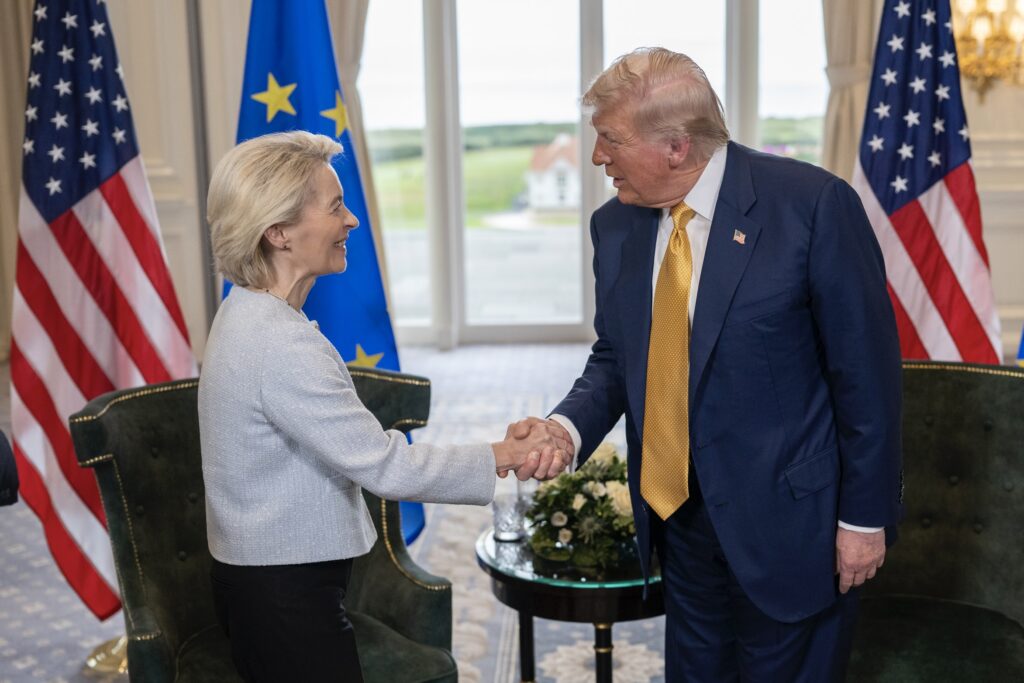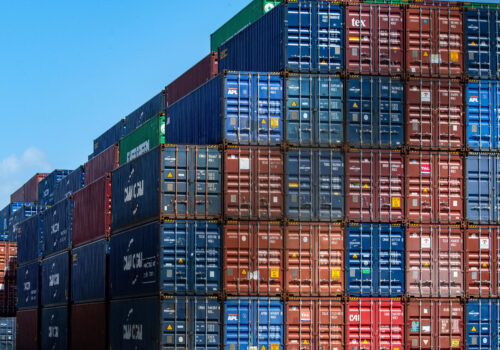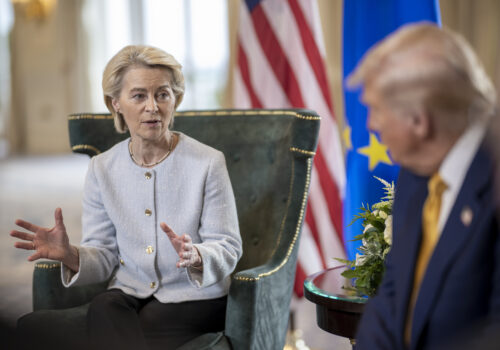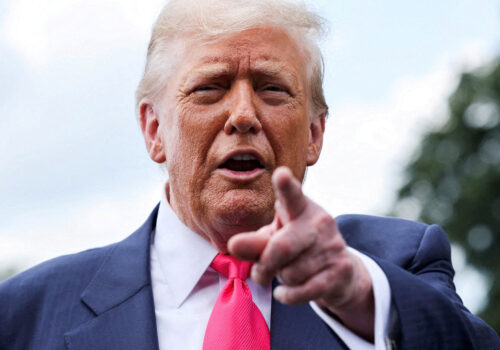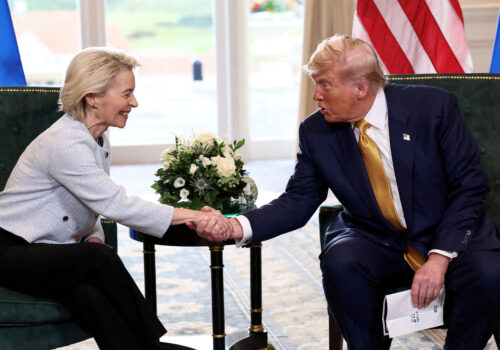Only a few months ago, the idea that the European Union (EU) should not retaliate against US President Donald Trump’s tariffs was highly eccentric. Yes, withholding retaliation would spare European citizens and firms from the pain of more lost business and pass-through inflation. But as the United States’ largest trading partner, the EU was meant to have leverage—both to defend its own interests and to stand up for the international trade rules it claims to uphold.
Instead, Brussels opted for a clearly asymmetric deal. To get the United States to reduce the 30 percent “reciprocal” tariff it was ready to impose by half, the EU agreed not to retaliate with tariffs of its own, and even to reduce the few tariffs it does retain on industrial goods to zero. The collective of experts and EU watchers, which tends to skew heavily in favor of freer trade, has mostly defended this decision. Grumbling by some has been dismissed by others as national politicians posturing for domestic audiences.
Three weeks on, the pro-deal case has been well publicized. By sidestepping a trade war, the EU has reduced the risk of parallel crises in transatlantic alignment on defense and assistance to Ukraine. Understanding early on that the Trump administration would treat everything together, not in separate negotiating silos, the European Commission has even made promises on behalf of EU companies to buy from and invest in the United States. This may come back to haunt the Commission, even in a scenario where the US courts definitively rule that the International Emergency Economic Powers Act cannot be used as a basis for tariffs.
But EU negotiators also obtained some quiet wins that would be headline news if they hadn’t coincided with so many newly erected barriers. The decades-old dispute over subsidies to Airbus and Boeing is now seemingly over, with zero tariffs on aircraft and parts on both sides for the foreseeable future. The five-year tariff truce for large civil aircraft agreed during the Biden administration had been set to expire next June.
Projections on the deal’s macroeconomic effects for Europe are reassuring, especially in contrast with much more alarming projections in trade war scenarios. The 15 percent rate would normally affect the competitiveness of EU exports to the United States noticeably. But with the EU’s main peers subject to a similar or higher rate, the effect will be muffled. The EU was first to secure the specific proviso that the United States’ old Most Favored Nation tariffs will only be charged if they are above the 15 percent rate, not cumulatively.
Ongoing negotiations are meant to lead to exemptions from the 25 percent Section 232 surcharge on autos—which does cumulate with a 2.5 percent Most Favored Nation rate. Depending on the quotas agreed, tens of thousands of European cars could become competitive in the United States again with a 15 percent instead of a 27.5 percent tariff.
In fact, there are ongoing negotiations on many aspects of the deal, which so far hasn’t even yielded a framework agreement. It is a political agreement kept alive by the fact that the United States has been keeping its side of the bargain by applying the 15 percent rate instead of 30 percent since August 7. So, does this inherent uncertainty create more risk or opportunity?
The risks will grow as time goes by. Adopting a slightly harsher tone than in Scotland, where European Commission President Ursula von der Leyen didn’t mention any retaliation, the EU has since announced that it is deferring its retaliatory tariffs for six months. The strategic constraints that forced the EU to accept the asymmetric deal won’t have changed by then, so the consensus is that this is a false deadline that can easily be pushed further into the long grass. But this is not correct. Six months from now will be early February. To push for new exemptions, the EU may not be able to resist threatening a few well-targeted EU agricultural tariffs or quotas after this year’s harvest and entering the midterm cycle.
Without a framework agreement, it is unclear how strict the Trump administration will be in holding the EU to its word on its liquefied natural gas purchases and investment promises. Even if these numbers can be massaged upward by using previous commitments, Trump will be watching how the EU and its member states deliver on defense pledges. And he could lose patience if US trade deficits with Europe persist. Neither of these indicators can be massaged.
There is still opportunity in all this fluidity. Though not referred to in the separate US and EU statements, both sides have suggested at least some openness to sector- or even company-specific relief: Firms investing in the US market may be able to secure exemptions from the new tariffs, including for their inputs. This would require regular, technical-level meetings between US and EU teams—something akin to the US-EU Trade and Technology Council, a first-term Trump creation that led to only modest successes under President Joe Biden. At least there will be plenty to talk about this time.
Charles Lichfield is the deputy director and C. Boyden Gray senior fellow of the Atlantic Council’s GeoEconomics Center.
Further reading
Wed, Aug 6, 2025
Europe’s play to keep Trump happy cannot come at the expense of a longer-term strategy
New Atlanticist By Torrey Taussig, Josh Lipsky
Even as the EU prioritizes defense and security interests with the US, it could come at the cost of economic and political cohesion in the bloc.
Fri, Aug 1, 2025
How Donald Trump remade global trade
New Atlanticist By Josh Lipsky
The US president has smashed the system, but the speed and scale of the smashing owes to a system that had been growing increasingly brittle for years.
Mon, Jul 28, 2025
Trump and von der Leyen made a deal. But the US and EU are drifting apart on trade.
New Atlanticist By Frances Burwell
Many elements of the Turnberry deal still need to be finalized, and the difficult process could drive the two sides even further apart.
Image: President Donald J. Trump participates in a Bilateral with the President of the European Commission Ursula von der Leyen at the Trump Turnberry golf course in Turnberry, Scotland, Friday, July 27, 2025. (Credit Image: ? Daniel Torok/White House/ZUMA Press Wire) REUTERS
